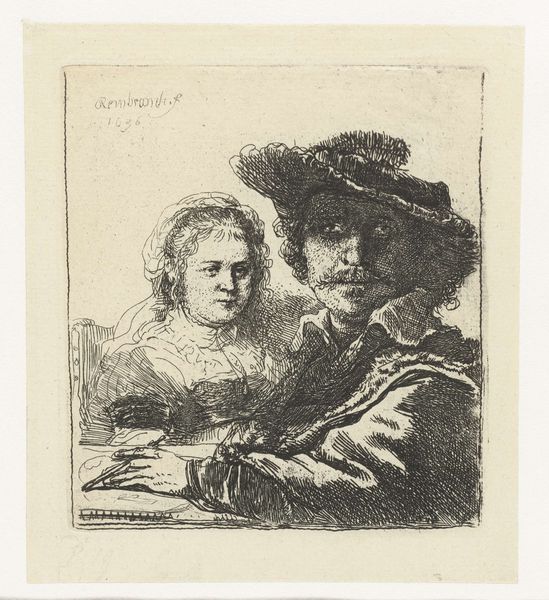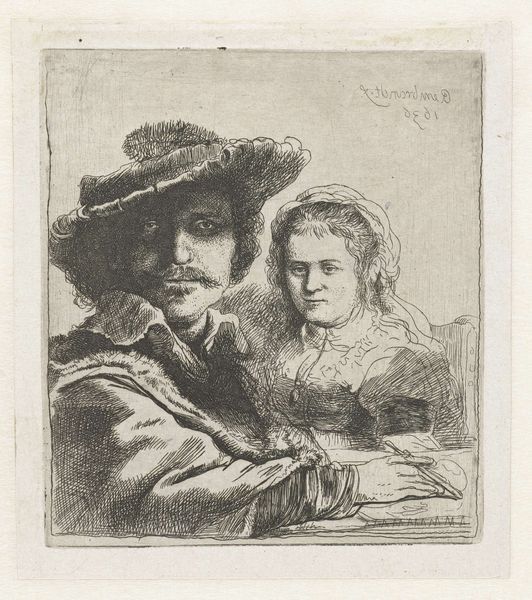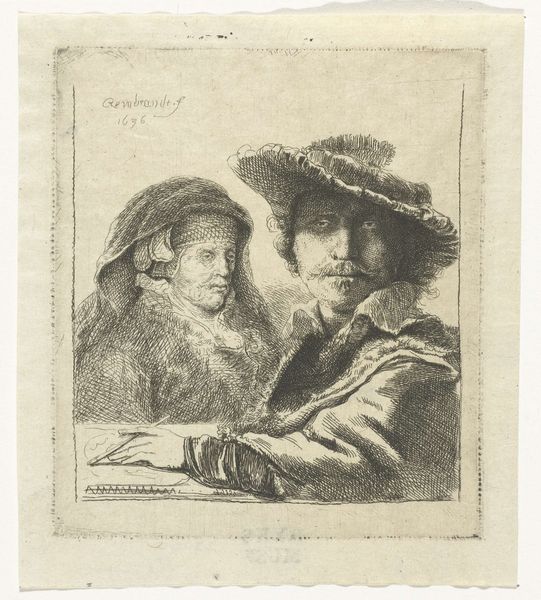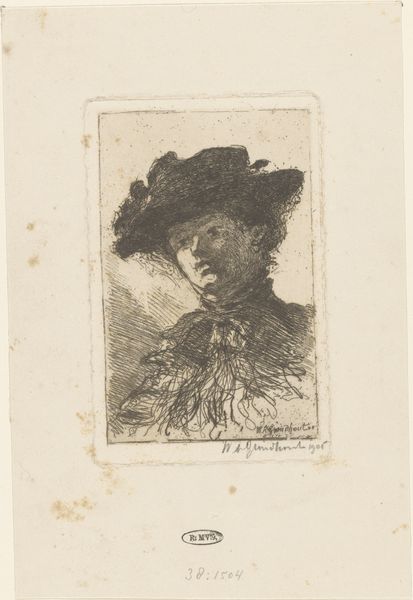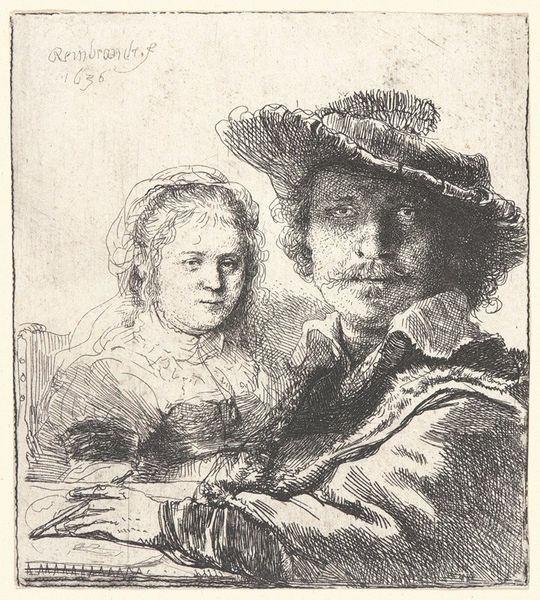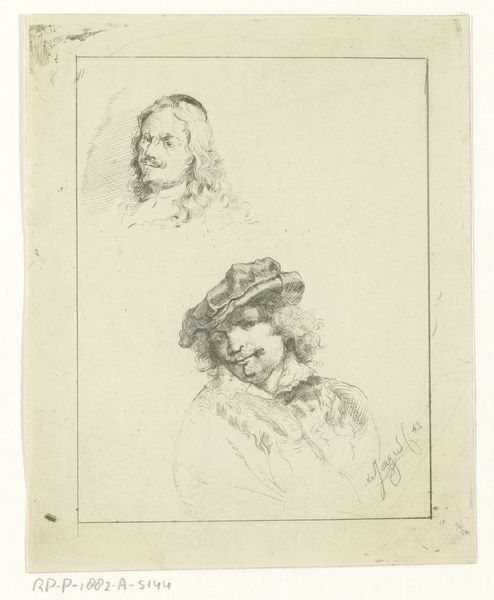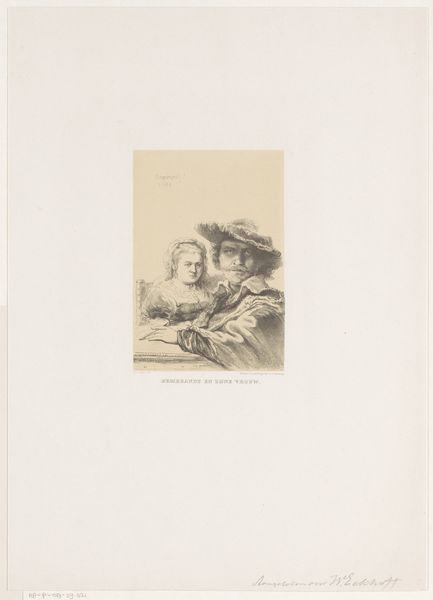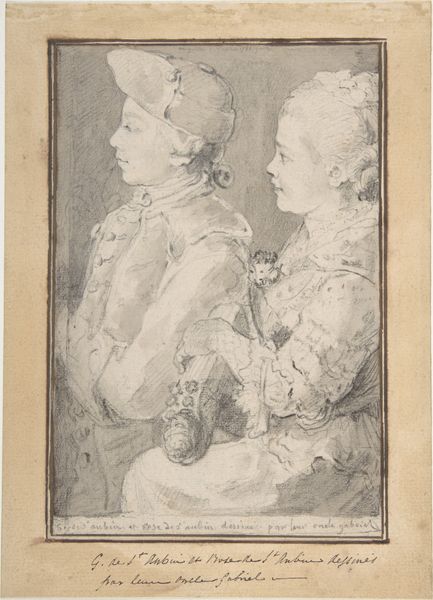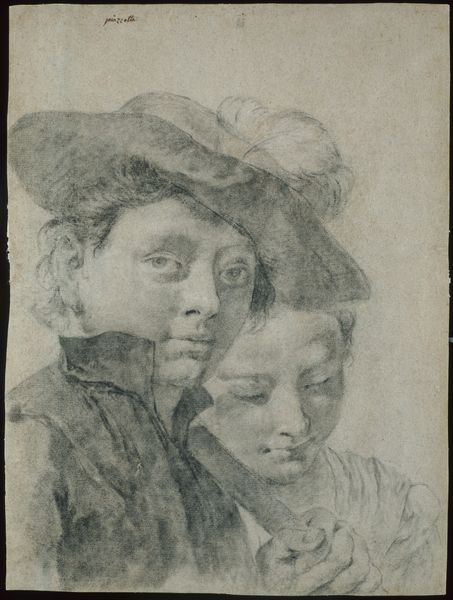
print, etching
#
portrait
#
self-portrait
#
baroque
#
dutch-golden-age
# print
#
etching
#
figuration
Dimensions: 4 3/16 x 3 3/4 in. (10.64 x 9.53 cm) (plate)5 3/4 x 5 1/8 in. (14.61 x 13.02 cm) (sheet)
Copyright: Public Domain
This is Rembrandt van Rijn’s etching, "Self-Portrait with Saskia," created in 1636, a few years after his marriage. Rembrandt, an ambitious artist in 17th-century Netherlands, captures himself with his wife, Saskia van Uylenburgh, in an intimate yet somewhat theatrical moment. The artwork offers a glimpse into their relationship and Rembrandt’s rising status. Saskia is positioned slightly behind him, her expression soft and supportive, which suggests her role as muse and partner. Rembrandt portrays himself in more elaborate detail, and is adorned with a feathered hat and coat, indicating his success and the couple’s elevated social standing. What strikes me most is how Rembrandt uses this self-portrait to explore themes of love, partnership, and social identity. It reflects not only his personal life but also the cultural values of his time, where marriage and social status were deeply intertwined. The emotional dynamic captured in this etching—a blend of tenderness and self-assuredness—invites us to reflect on the complexities of personal relationships within the broader context of societal expectations.
Comments
minneapolisinstituteofart about 2 years ago
⋮
Self portrait with Saskia, made in 1636, shows Rembrandt pausing in his work. His hand has gone slack on the stylus. He and his wife stare out at us. It is as though we have interrupted them. Rembrandt was of course gazing into a mirror, where he saw Sakia at the table, serving as partner, model, and muse. The novel image fits into no clear pictorial tradition. Though twenty-first-century sensibilities may spark criticism of the unequal scale of husband and wife, in the context of the seventeenth century, the image is one of remarkable intimacy. This impression is unusually fine and well preserved.
Join the conversation
Join millions of artists and users on Artera today and experience the ultimate creative platform.
